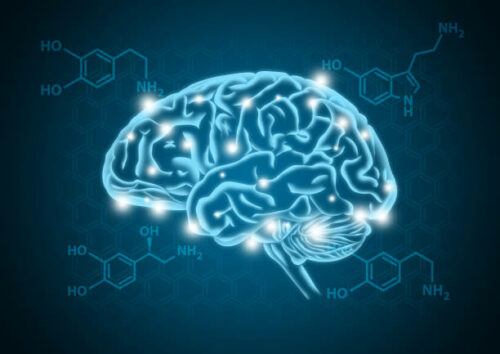Image courtesy of iStock Photo.
Dopamine, a chemical that acts as a neurotransmitter, is responsible for sending thousands of tiny “messages” that ultimately help generate several of our thoughts and actions. It has a myriad of functions within the body and brain, but it is best known for allowing us to feel pleasure, satisfaction, and motivation. With this in mind, it is no surprise that it is a major point of focus when discussing addiction and reward. Social factors are also known to heavily influence the human brain and psychiatric outcomes, although there is scarce research proving a biological connection. Because of that, leading researchers at Yale have set out to explore these connections.
In this project, led by Katina Calakos and Aleksandra Rusowicz, the team used Positron Emission Tomography (PET scans) to image dopamine receptor (D2/3 R) availability. This data was obtained from previous studies and then correlated to population and socio-economic measures obtained from the Social Explorer Analyses of the 2014-2018 Census.
The results were surprising. For one, they found that higher D2/3R availability was significantly associated with a higher total population in residential ZIP codes. Similarly, in zip codes where a lower percentage of the population possessed a bachelor’s degree or higher, there was a higher dopamine D2/3 R availability. Functionally, one could take this to mean that environment does have a significant impact on our brain chemistry.
Dopamine in and of itself is extremely useful and, as previously mentioned, necessary for normal bodily functions. However, issues can arise when there is too much or little of it. For example, excessive dopamine activity has been linked to anxiety, insomnia, and mania. On the other end of the spectrum, low dopamine activity can cause problems like muscular issues, cognitive impairment, and attention deficits. Considering this background and the findings from this research, one could assume that the environment does impact the way your brain works.
Aleksandra Rusowicz and David Matuskey, co-first author and corresponding author on this paper, respectively, discussed both the inspiration and the implications of this research, in addition to what it could mean going forward. This project was driven by prior animal studies focusing on how dopamine availability was affected by the animal’s position within its “society” and how that could later predispose them to develop drug dependency. Initially, this team asked questions focused on how greenspaces could affect brain chemistry, as environmental surroundings have been shown to affect brain activation. All those contexts came together to produce this more recent research.
However, their findings represent one small step in filling this gap that is all too common for health research. Most of the evidence comes from epidemiological or longitudinal studies focusing on certain aspects of a population – living conditions, education, health, and correlations. However, the biological data to back-up these findings is simply scarce and a relatively new area of focus. This is why research like this could help inform future findings that focus even more closely on the type of social factors that impact social development. The investigators also expressed their hope that research like this could potentially have policy implications, providing a biological backbone to diversity and education initiatives in communities that are often neglected.
While Matuskey described the use of census data as “advantageous” because they could focus on surroundings and environments, their research had some limitations. Despite how useful it was in gaining insight into these communities, it was fairly broad and could be considered outdated when we take into account the changes brought about by newer factors such as the COVID-19 pandemic. It is likely that if this team had had access to more specific data, we could have been able to discern even more detailed patterns about how location and social circumstances impact the brain developments in question.
Social factors have been correlated to health for years, but thus far, we have lacked the biological data to support this claim. Thanks to work like this, we now have biological data that can support the existing studies. As this type of science gains more traction, we will see more and more detailed results. Maybe one day, we can use those findings to push for policy change that ameliorates the roots of these problems.

